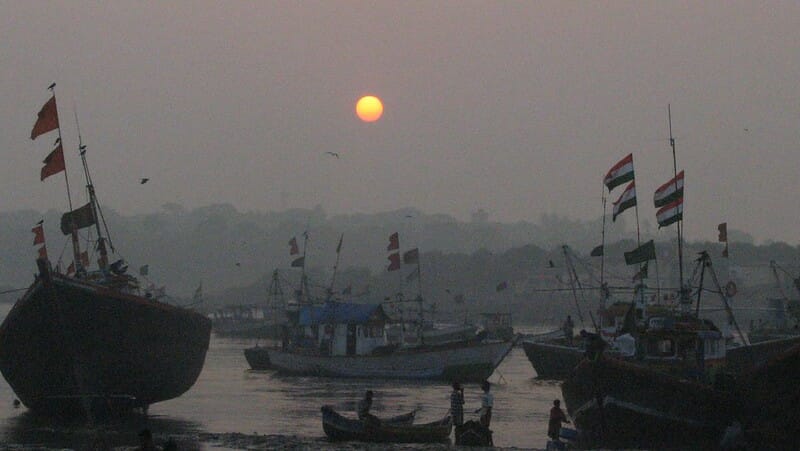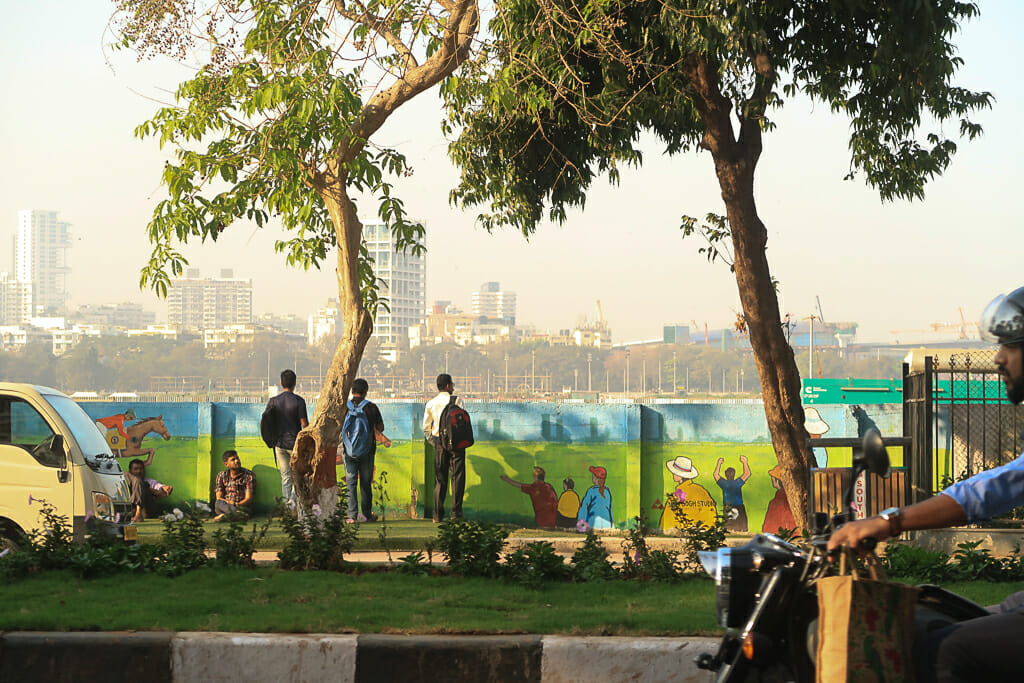A day before this year’s Brihanmumbai Municipal Corporation’s (BMC) budget, Chief Minister Eknath Shinde announced that he would urge the corporation to install air purifiers as a solution to Mumbai’s worsening Air Quality Index (AQI).
And the very next day, a substantial amount was allocated to the installation of air purifiers in the city. Estimated Rs 3.5 crores for one, there are plans to set up 14 air purifier towers, two each in seven municipal zones.
Read more: Mumbai’s AQI worsens every winter, who is responsible?
Additionally, there are plans to install air purifiers at 5 crowded areas of the city – Dahisar Toll Naka, Mulund Check Naka, Mankhurd, Kalanagar Junction and Haji Ali Junction. The initiative falls under Mumbai’s Air Pollution Mitigation Action Plan, for which the BMC has earmarked a total of Rs 25 crores.
BMC’s Deputy Municipal Commissioner (Environment), Atul Patil, says it is not clear which department will take the lead on this project. “It is just a plan for now, a provision for air purifiers has been made. We don’t know who is going to do it and how involved my department will be in it.”
Air purifiers: “waste of public money”?
The smog towers or air purifiers will be 30 feet in height. Smog Towers use high efficiency particulate air (HEPA) filtration or air ionisation technology to remove PM 2.5 particles from the air. The polluted air passes through the filters where particulate matter is trapped and cleaner air is then released.
Officials including Patil say they know little about the roadmap ahead regarding implementation, as the plan is still in its initial phase. However, opposing views are already emerging. For one, the former environment minister of the state Aaditya Thackeray called it “an absolute waste of public money”.

But a similar sentiment is also echoed by environmentalists, who believe the money could be used to install online monitoring systems at construction sites and other polluting hotspots. The founder of Conservation Action Trust (CAT), Debi Goenka, says, “Installation of air purifiers is meant to show that BMC and the government is doing something but in reality there is no practical use for it.”
Read more: Smoggy, but unfazed: Mumbai needs to take air pollution more seriously than it does
Prasad Khale, a senior conservation officer with CAT, adds that the purifiers are not going to be a one-time expense. “The maintenance cost will be high for these purifiers because of high pollution levels. They will have to frequently change the filters. The right approach would have been to cut down sources of pollution.”
When asked Patil about the criticism, he refused to comment further. Municipal Commissioner and Administrator Iqbal Singh Chahal remained unavailable for a comment.
‘Instead of air purifiers, implement existing rules’
A 2021 analysis by System of Air Quality Weather Forecasting and Research (SAFAR) concludes that there are three main sources of pollutions: dust due to transport, emissions from industries, and bio-fuel. Another 2020 study by National Environmental Engineering Research Institute (NEERI) and IIT-B concluded that roads or construction dust was responsible for over 70% of the particulate matter (PM) load in Mumbai’s air.
Frequent exposure to polluted air exacerbates the health of those who suffer from respiratory illnesses and contributes to the emergence of new cases. A report by the Indian Express suggests the state health department is collecting data from the city’s civic and private hospitals about patients whose illnesses were triggered by worsening pollution levels.
Meanwhile, those like Goenka believe the long term solution to the problem is to bring the emissions down by implementing some of the existing rules and regulations. BMC puts reasonable conditions on any kind of construction, he notes.
“It is mandatory to put barriers at construction sites that will trap the dust, they are required to spray water on the construction sites and on truck tyres so the mud from the site is not carried on the road. None of these are implemented.”
If not air purifiers, then what?
“When arteries bleed, you don’t go for band-aids,” says Stalin D, a conservationist and founder of environmental NGO Vanashakti. Mumbai’s AQI has been worsening year-after-year and there is an urgent need to address it. But, polluting more with the hope that air purifiers will solve everything is not the solution, he explains.

“They have got a few things right in the budget like their plans to install 5 Continuous Ambient Air Quality Monitoring Stations (CAAQMS). But there is already enough data on sources of pollution and areas that see bad air quality, there is nothing done about it,” says Stalin.
Even the move to procure 3000 BEST electric buses has been welcomed. The BMC also has plans to procurement sprinklers to settle dust on roads and footpaths. Stalin suggests a more cost-effective alternative: usage of treated sewage water. “A lot of waste water goes into the sea, the same water can be used to clean up the roads instead using tankers. This should have made its way into the budget.”
There are plans to plant 1 lakh trees in multiple locations of the city. He shrugs it off as an ambitious figure that will probably never see the light of the day. “Alternative would have been to plant smaller trees along Mumbai roads, trees that don’t grow beyond 10 ft long with bigger leaves. This would have helped in catching dust.”
The budget document, under the air pollution mitigation plan, also mentions the need for communication and awareness campaign where the BMC would inform the citizens about health risks from air pollution.
“It makes more sense to create a helpline where people can lodge a complaint about the polluting sources in their areas, for which the redressal would be the same day itself,” says Stalin.
Atmospheric science defines air pollution as a complex mixture of chemical compounds that are constantly forming and transforming into other compounds in moving air with no boundaries. A research paper that evaluates National Capital Region of Delhi’s experiments with smog towers (large air purifiers) concludes, “With no boundaries, it is unscientific to assume that one can trap air, clean it, and release into the same atmosphere simultaneously.”